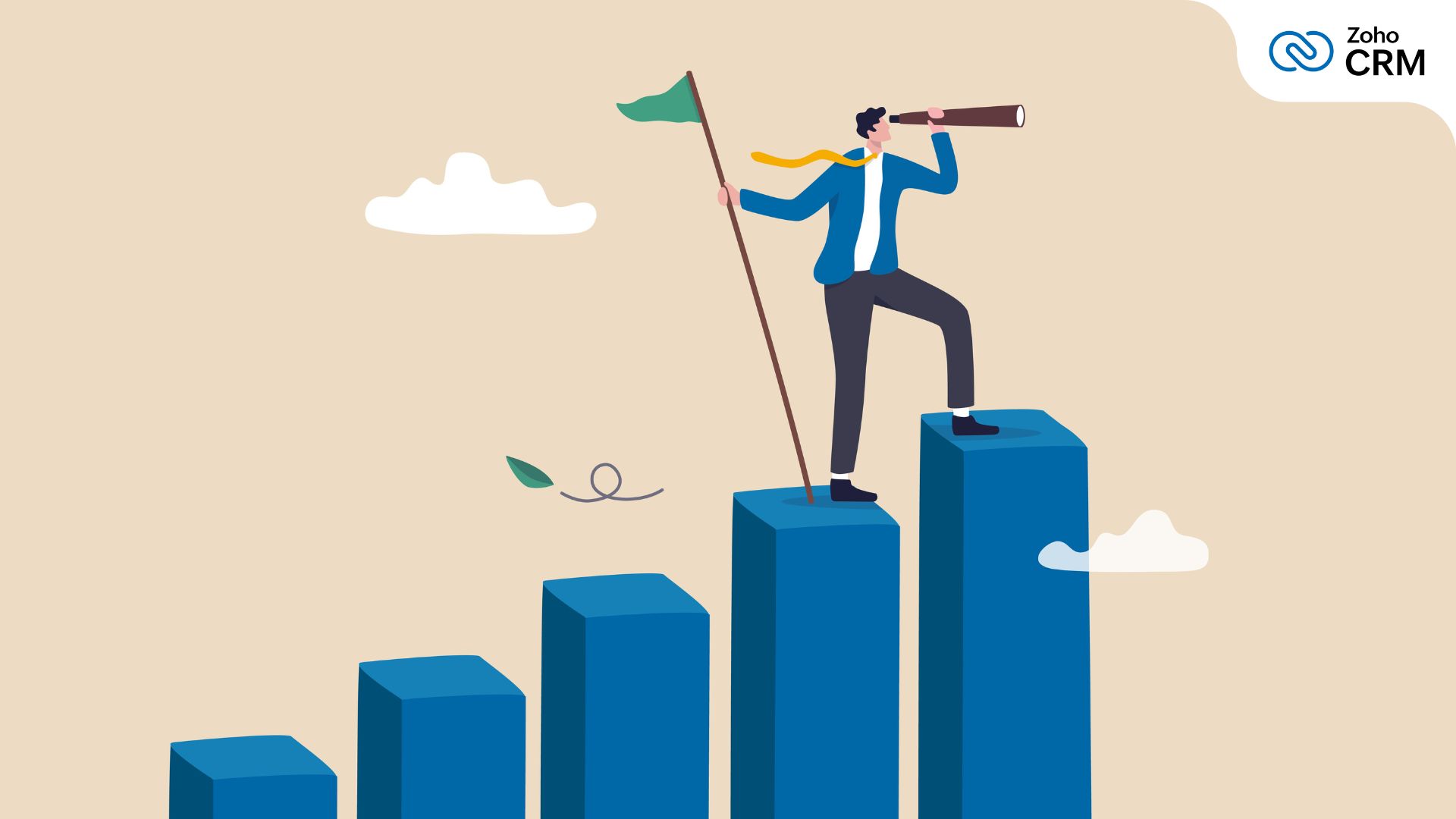Personalised sales: Five steps to earn customers for life
- Last Updated : December 19, 2023
- 496 Views
- 5 Min Read

For any salespeople reading this, personalization needs no introduction. Outside of work, you are consumers of products and services like the rest of us. When you get individual attention and treatment, you feel compelled to buy more and spread the word.
As a salesperson, how much are you personalizing your customers’ experiences? Is there room for improvement?
Becoming customer-centric unlocks a whole new set of opportunities for sales and marketing, depending on the industry, geography, culture, and so on. Here are five general concepts that any business can use to earn customers for life.
It starts with being relevant
Perhaps the biggest advantage that comes with collecting customer information is the power to stay relevant with your product offers. You can deduce your customers’ needs and preferences, which can help you segment them into useful groups. When you pitch or showcase products that are relevant to certain customers, they’re more likely to make a purchase! Here are a couple of examples:
Local grocery store: When some of your regular customers never purchase meat-based products from your store, it’s safe to assume that they might be vegetarian or vegan. You can create a mailing list for vegetarians and send them seasonal, monthly newsletters or notices for new arrivals that feature exclusively vegetarian products.
Online fashion store: When a new user signs up, ask for their gender and age. If it’s a woman in her 20s, men’s and kids’ apparel can be discarded from the suggestion engine. It’s safer to showcase fast fashion that’s geared towards young college-age girls.
Find patterns and profile
Building buyer personas helps you understand your ideal customers and what kinds of personalization will appeal to them. Keep track of the purchase, browsing, and cart patterns that each customer creates, compare and contrast them, and establish a framework to create profiles. Since large amounts of data are required, a CRM solution will be critical for successful implementation.
Let’s take the example of a car showroom: If a middle-aged man walks into the showroom with his young daughter looking for a small SUV, what are some basic assumptions that the salespeople can make?
“Space is a pain point for him. He could be from a family of four. Fuel economy is a deal-breaker for him—he wants a small SUV, after all. He might be interested in learning about safety ratings—he brought his little girl with him.”
Once enough customers from different walks of life walk into the showroom, they’ll have the data set necessary to classify them into personas. This helps to personalize their experience with the showroom, from start to end. You can tailor the sales pitch and even assign suitable sales reps who are better equipped to handle certain customers.
Cross-sell and up-sell with context
Aside from modeling personas, identifying patterns also helps us cross-sell and up-sell to customers. How does Netflix recommend titles to you? Your viewing history is compared with the global audience, and they identify similar viewing patterns to suggest titles that you might be interested in. This logic can be applied for sales, too.
Here are some examples:
Internet service: If a new customer who purchased a 200 GB/month plan burns through 60% of their data in just 10 days, it means they horribly misjudged how much internet they’d consume. That’s an opportunity to up-sell! Using historical data, the provider can find out which customer needs to move to a bigger plan based on their usage.
Pizza joint: It’s rare for a customer to buy just pizza. Some items are often purchased together, and most combo offers are made based on that. Knowing what goes well with what, based on the purchase trends exhibited by customers, helps them cross-sell their products.
Be consistent across all channels
Today, an average customer can research your products online, explain their needs to a live chatbot, talk to a salesperson over the phone, buy the product in a physical store, and leave feedback on social media. They expect only the best experience no matter how, when, and where they interact with you.
Take a travel agency for example. They have a website, offices with phone lines in multiple cities, social media handles, and knowledgeable agents. They’ve made it easier to work with them, but is the experience offered the same no matter which channel you use to interact with them? If the agents don’t keep track of what you’ve added to your travel wish list online, and the website doesn’t keep track of the destinations you talked about with an agent, there is inconsistency.
Having an omnichannel presence is imperative to providing a world-class customer experience. One must be able to identify who the customer is and their history of interactions with the brand based on something as simple as an email or a phone number. This is possible with a customer relationship management solution in place.
Create a customer loyalty program
Your personalization strategies are aimed at long-term business, not just one-time purchases. Our goal is to retain customers for life by giving them an experience that keeps bringing them back for more. But, there needs to be an incentive for coming back. Hence, loyalty programs!
Loyal customers spend more money, period. It’s easier to sell to an existing customer than a new one. They have a higher conversion rate, therefore a program that rewards them with freebies and discounts is a more profitable idea in the long run.
Supermarkets are a great example. They reward you based on how much you spend, convincing you to spend more in one shopping session. Another technique is rewarding customers after a predetermined number of visits or purchases, which encourages people to keep coming back.
It’s a win-win program, and it generates a lot of word of mouth and referrals for the store.
It’s an organization-wide philosophy
As a salesperson, you could put a lot of thought and effort into curating a customer’s experience with your business, but sales is just one part of a customers’ life-cycle. To earn customers for life, personalization should be a part of the work culture for the entire organization, front or back office.
This applies to more than just marketers, support reps, developers, and distributors. This goes for a store’s security personnel who greet customers, the delivery personnel who rings their doorbell, the janitors, the waiters, the receptionists. Just about any designation that’s responsible for the happiness of the customer should understand the impact they have.
Looking for a solution that can help you personalize your relationships with customers? Check out Zoho CRM.


